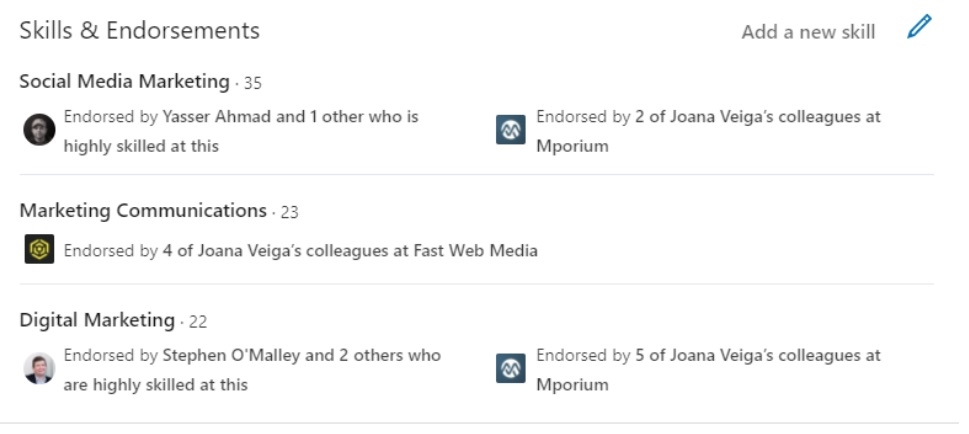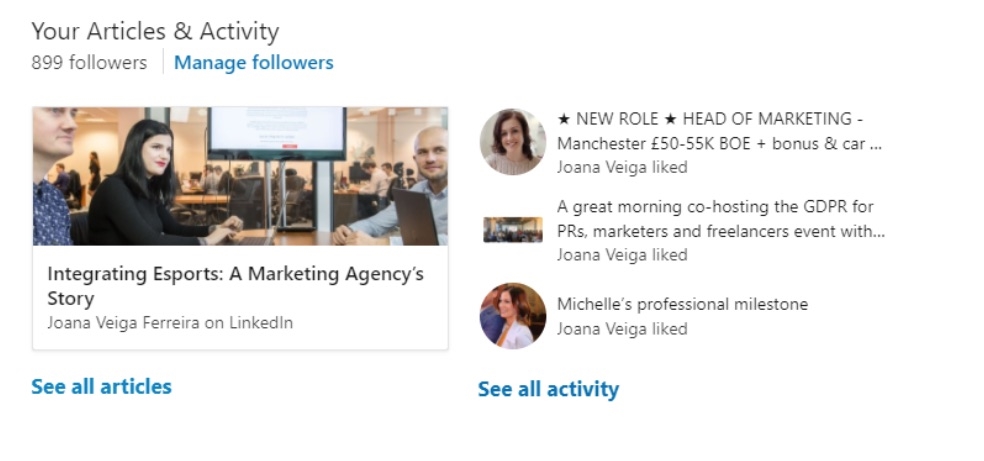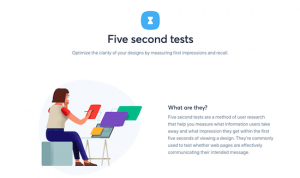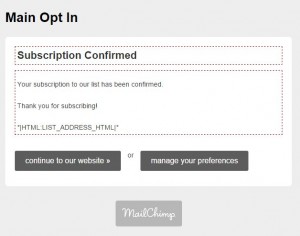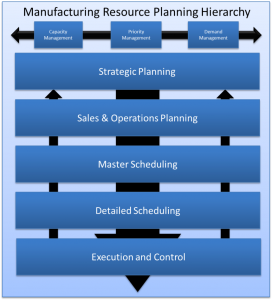— July 18, 2018

27707 / Pixabay
LinkedIn is one of the best tools out there for finding jobs, but it’s also a great tool for recruiters and hiring managers to vet their candidates before inviting them to interview or when deciding on who to hire.
If you’re looking for a career in digital, a strong CV may get you an interview, but a strong LinkedIn profile will set you apart. A strong LinkedIn profile doesn’t just mean you’ve filled out all the fields, there are a few extras that will make you stand out above the crowd and show the potential employer that you’re serious about digital. Let’s start with the essentials and then go through those extras.
The Essentials
1. Profile photo
Choose a neutral profile photo with a plain background. Remember this is a professional network, not your Instagram account. So, a photo of you on a night out with your friends is not appropriate, and please no selfies.
2. Background Photo
This is a fairly recent LinkedIn feature, and one that not many people use. If you don’t add your own background photo, LinkedIn simply uses the standard background photo, so you’ll recognise if someone hasn’t got one. In terms of adding to your profile quality, it’s more of an aesthetic preference, but from a marketing point of view it shows that you’re familiar with all of LinkedIn’s features and experiment with all of them. It’s also a chance to add a bit of personality, for example mine is a photo of the entrance to a beach, highlighting my passion for travel.
3. Headline
Create an attention-grabbing headline that will showcase your best qualities. Most people will put their job title as their heading, and there’s nothing wrong with that. But if you’re not currently employed, then think about how you can use this headline to showcase what you can offer. For example, ‘experienced blogger with over 50,000 monthly visits’ stands out a lot more than ‘marketing student looking for full time job’.
4. Summary
In this section, LinkedIn is giving you 2000 characters to tell your story. This is your chance to showcase what you can offer a potential employer and give them reasons to invite you to interview. Use this to highlight personal qualities you can bring to a business and any experience you have gained over the years.
5. Work History
If you’re just starting your career in digital, you may not have much work experience, but there’s no reason to leave this section blank. If you have a part time job, or have done any internships, you need to add these to your profile and include detailed descriptions of what you did and what skills you gained. Use keywords like team-work, time management, multi-tasking, communication, quality control etc. to highlight to potential employers that while you may not have direct experience in the job you’re applying for, you have transferable skills.
6. Education History
If you’re studying for a degree, this is a great way to highlight your achievements. Don’t just list your degree but mention any modules or topics you were particularly interested in, or your dissertation topic.
7. Languages
If you speak any other languages (even if you’re a beginner), add them to your profile. It may not be relevant to the job, but it makes you stand out!
8. Certifications, Honors & Awards
If you have received a certificate, an award or any other type of honor, then make sure to state these on your profile. It highlights your ambition and your competitive spirit, all of which will make you stand out above the crowd.
9. Voluntary experience
Any voluntary experience, big or small, will help boost your profile, particularly if you haven’t got that much work experience yet. It shows you have a good work ethic, and value experience over money.
The Extras
Everything up until now is essential and will form part of most people’s LinkedIn profile. But the below are a few little extras that’ll make you stand out.
1. Personalised URL
If you want a career in digital, learning about the SEO value of a URL is a basic step. It’s very easy to add a personalised URL on LinkedIn and not having one will only tell your potential employer that you might not be aware of this feature – which won’t look good if you’re applying for a job in digital.
2.Skills & endorsements
Create a list of skills and ask your network to endorse you. This makes you stand out as someone who is recognised by your network as possessing these skills. Think about things like team work, creative thinking, copywriting, problem solving, leadership etc. Recruiters often search for people that have been endorsed for particular skills, so not only does this look good on your profile, but it’ll help you get found by recruiters or potential employers.
3. Recommendations
Ask your network to recommend you. Any previous employer or colleague can write a recommendation for you, and this stands out to employers. If you’re lacking in the work history department, then ask a lecturer or a fellow student whom you’ve worked with to provide a recommendation.
4. Long form articles & publications
Now this is where you truly show your advanced LinkedIn skills, and where you’ll really be noticed by that potential employer so read carefully. LinkedIn has a feature that allows you to publish long-form articles. Think of this like your personal blog on LinkedIn. USE THIS! If you’re interested in a career in digital marketing, content forms a large majority of all strategies, so if you don’t have any work experience in content you can make up for it by having fantastic long-form content on your LinkedIn profile. But write about topics that are appropriate for a professional network (i.e. don’t write about make-up and food). Think about maybe exploring digital marketing topics or highlighting anything that you’re learning. Show that you have an opinion and a critical mind, this will really make you stand out.
Similarly, if you have any publications out there, you can link to these via your profile and create a portfolio on LinkedIn. This could be anything from blog articles to websites.
5. Grow your network
Having a great profile is important but having a large network will just give you that extra boost. So, make sure you’re connecting with as many people as possible on LinkedIn. Friends, colleagues, teachers, lecturers, employers, anyone you’ve met at networking events etc. Most people have a LinkedIn profile these days and most are happy to connect with you to grow their own network, so don’t be shy, ask for that connection. And make sure to follow any influencers too so you can learn from them and stay up to date.
6. Network!
Just like any social networking platform, you need to stay active to stay relevant. Don’t just create a profile and hope that the job leads come in but spend some time every day looking through your newsfeed, posting an update, posting articles, commenting on other articles and so on. This tells your potential employer that you’re interested in the industry you want to work in, that you know how to network and that you have something to say. All of your most recent activity is displayed directly below your summary so it’ll be one of the first things a potential employer sees.
So that’s it, follow the above steps and you’ll have a LinkedIn profile to be proud of. Recruiters will be able to find you by searching for people with the relevant skills or keywords listed on your profile, and potential employers will be impressed by your sleek, professional, and up to date profile.
And don’t forget, you can also search for job vacancies via LinkedIn and in some cases apply using just your LinkedIn profile, yet another reason to make sure you maximise your LinkedIn image.
Digital & Social Articles on Business 2 Community
(84)
Report Post


